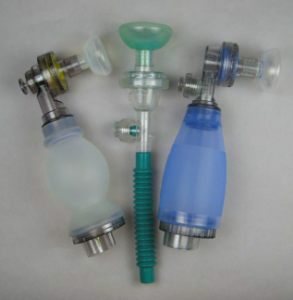About Newborn Resuscitation
Birth asphyxia kills 814,000 newborns every year, accounting for almost a quarter of newborn deaths. Additionally, some live births are misclassified as stillbirths when no resuscitation is provided. Many of these deaths could be easily prevented with basic neonatal resuscitation.

Photo courtesy of PATH/ Patrick Mckern
Commodity Introduction
Almost half of all newborn deaths are in the first 24 hours after birth, the majority resulting from birth asphyxia. This condition, manifesting as the failure of the newborn to establish breathing after birth, kills 814,000 newborns every year, accounting for almost a quarter of newborn deaths.[1] An estimated 5 to 10 percent of newborns (~10 million) need the initial steps of resuscitation such as tactile stimulation, airway clearing, or positioning. About 3 to 6 percent of all newborns (~6 million) need additional steps including assisted ventilation with bag and mask.[2]
Commodity Context
Although there is a large supplier base supporting this category of medical devices in both developed and developing countries, countries often do not prioritize newborn resuscitation equipment needs among many other conflicting priorities. Resuscitation equipment is less likely to be available in lower-level health facilities and is almost nonexistent in home deliveries where a large proportion of births take place.[3]
Products Available
Resuscitators are manufactured in multiple locations worldwide with regional concentrations in China/Taiwan, India, the United Kingdom, other European countries, and the United States. Most manufacturers indicate that they have worldwide distribution capabilities. Two major types of neonatal resuscitation devices are available in the market: self-inflating bag and mask, and suction devices. Self-inflating bag and mask provide positive pressure ventilation support. The bag comes with either 240ml or 500ml size volume design, and the mask also has two sizes to fit low- and normal-birth-weight babies with a pressure-relief valve designed to limit the pressure. Bag and mask cost on average about $8 to $100. Suction devices are used to clear the airway of the newborn to help facilitate breathing. They cost an average of $2 to $10.

Photo courtesy of PATH
Product Efficacy
An evaluation of select neonatal resuscitation devices that were available in developing countries found a high safety profile for bag and mask devices, including evidence that bag and mask devices were sufficient to reliably achieve resuscitation by appropriately trained providers.[4] As for suction devices, the evaluation found that “Penguin devices,” the single product in the group of large one-piece aspirators with a top that opens, performed similarly to the one-piece suction bulbs with the added advantage of offering multiple cleaning and disinfection options and excellent durability.[4]
Common Barriers
Lack of clear protocols for neonatal resuscitation among providers is a major barrier to performing consistent resuscitation, along with training and ethical dilemmas regarding “futile care,” and identifying newborns that should not be resuscitated. Furthermore, confusion about what team or role has the responsibility for instituting newborn resuscitation sometimes results in unnecessary barriers to neonatal care. At the policy level, price variation among seemingly similar products can lead to confusion and lack of motivation for procurement. Even when equipment is available, it may not be readily accessible in the delivery room.
For more information on resuscitation equipment, please visit the UN Every Woman Every Child initiative webpage.
References
- Robert E Black, Simon Cousens, Hope L Johnson, Joy E Lawn, Igor Rudan, Diego G Bassani, . . . Richard Cibulskis. (2010). Global, regional, and national causes of child mortality in 2008: a systematic analysis. The Lancet, 375(9730), 1969-1987.
- Stephen N Wall, Anne CC Lee, Susan Niermeyer, Mike English, William J Keenan, Wally Carlo, . . . Iwan Ariawan. (2009). Neonatal resuscitation in low-resource settings: What, who, and how to overcome challenges to scale up? International Journal of Gynecology & Obstetrics, 107, S47-S64.
- Opiyo Newton, & Mike English. (2006). Newborn resuscitation: defining best practice for low-income settings. Transactions of the Royal Society of Tropical Medicine and Hygiene, 100(10), 899-908.
- PATH. (2010). Practical Selection of Neonatal Resuscitators: A Field Guide (Version+3). Seattle.
